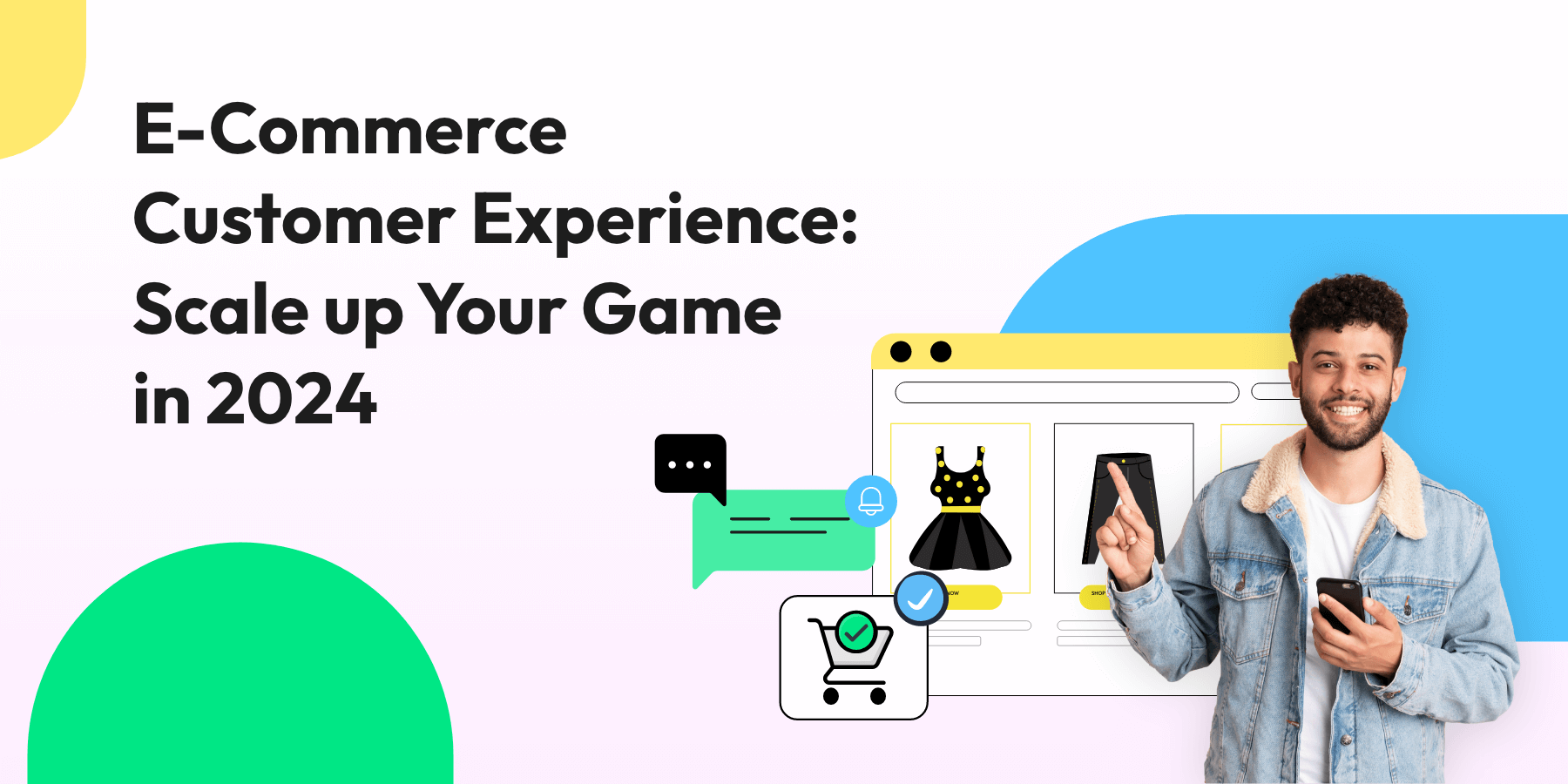What is E-commerce Customer Experience?
E-commerce customer experience is the overall journey your customers go through when interacting with your online store. It encompasses every touchpoint, from the moment they discover your brand to after they receive their purchase.
This includes website navigation, customer service interactions, and the ease of the checkout process. A positive e-commerce CX makes customers feel valued and understood. Plus, it encourages them to return and recommend your store to others.
Difference Between E-commerce Customer Experience and User Experience
While e-commerce customer experience (CX) and user experience (UX) are often confused, they mean different things.
- User Experience (UX): UX focuses on how easy and pleasant your website or app is to use. For example, a good UX means your site is easy to navigate, looks great, and works without glitches. If customers can find products quickly and have a smooth checkout process, that’s good UX.
- E-commerce Customer Experience (CX): CX in e-commerce includes UX but goes beyond it. It covers every interaction a customer has with your brand. This means not just the website experience but also customer service, delivery speed, and how issues get resolved after a purchase. For instance, if a customer has a question and gets quick, helpful responses from your support team, that’s part of a good CX. If their order arrives on time and in perfect condition, that’s also part of CX.
A. Customer Satisfaction
The foundation of a successful e-commerce business is ensuring customers are truly happy with their purchases. Genuine satisfaction means customers feel delighted even after the transaction, making them more likely to return for future shopping.
B. Repeat Business
Happy customers come back. When an online store consistently meets customer needs, it turns shoppers into regulars. These loyal customers provide steady income, proving that a great e-commerce customer experience pays off.
C. Word of Mouth
A fantastic e-commerce experience doesn’t just make customers happy. Instead, it turns them into brand advocates. Satisfied shoppers eagerly share their positive experiences with friends and family. These highly trusted personal recommendations can bring in new customers to help naturally grow your business.
D. Brand Loyalty
Providing a great e-commerce experience makes customers loyal to your brand. When they consistently enjoy a smooth and satisfying shopping journey, they prefer your products over competitors. This loyalty keeps them coming back.
E. Competitive Advantage
An exceptional e-commerce experience sets your business apart in the competitive online shopping world. It helps your brand stand out in a crowded market, making it the top choice for shoppers who seek more than just products – they want a great overall experience.

F. Reduced Cart Abandonment
Improving the e-commerce customer experience reduces cart abandonment. When the process is easy and enjoyable, customers are less likely to leave their carts without buying. It leads to more completed purchases and increased revenue.
G. Positive Reviews
An excellent e-commerce shopping experience leads to happy customers who leave positive reviews. These reviews act as recommendations, making your online store look good and trustworthy. They show other potential customers that your store is worth shopping at.
H. Higher Sales
Customers with a great shopping experience are more likely to buy and spend more each time. So, you make more sales and earn more money.
I. Cost Savings
Prioritizing the e-commerce customer experience also saves money. Satisfied customers encounter fewer issues and require less support. Reducing customer inquiries and support tickets saves time and resources. As a result, your operational efficiency gets improved.
J. Adaptation to Trends
Focusing on e-commerce customer experience helps your business stay agile and adapt to evolving trends. You remain relevant and competitive in a dynamic market by keeping up with customer preferences and market changes.
Reasons Why Businesses Invest in E-commerce Customer Experience
While we’re sure the above advantages were enough, let’s go one step further.
Here are three solid reasons for businesses choosing to invest in e-commerce customer experience.
1. To Improve Cross-Selling and Up-Selling
- Cross Selling: Recommending related products based on customer interests or previous purchases. For example, suggesting camera accessories like a bag, tripod, or extra lenses alongside a camera purchase.
- Up Selling: Highlighting premium options that offer enhanced features or capabilities. For instance, showcasing a higher-tier smartphone model to customers browsing for a new phone.
- Personalization: Tailoring product recommendations and offers based on customer data and behavior. Personalized suggestions increase the chances of customers making additional purchases.
2. To Improve Customer Retention
- Customer Loyalty: Fostering loyalty through seamless and enjoyable shopping experiences. Loyalty programs, rewards, and personalized recommendations incentivize customers to return.
- Effective Communication: Providing excellent customer support, easy returns, and efficient communication channels. Addressing customer concerns promptly enhances the overall shopping experience.
- Post-Purchase Engagement: Maintaining engagement through email marketing, social media updates, and personalized follow-ups. Plus, keeping customers informed about new products and promotions to strengthen their connection with the brand.
3. To Improve Customer Satisfaction
- User-Friendly Interfaces: Ensuring intuitive navigation, clear product descriptions, and easy checkout processes. A user-friendly website or app reduces customer frustration and enhances satisfaction.
- Fast and Reliable Delivery: Offering efficient order fulfillment, accurate delivery estimates, and reliable shipping options. Package tracking and timely updates on order status improve the overall delivery experience.
- Responsive Customer Support: Providing responsive support through live chat button, email, and phone. Addressing inquiries and concerns exceeds customer expectations and boosts satisfaction levels.
